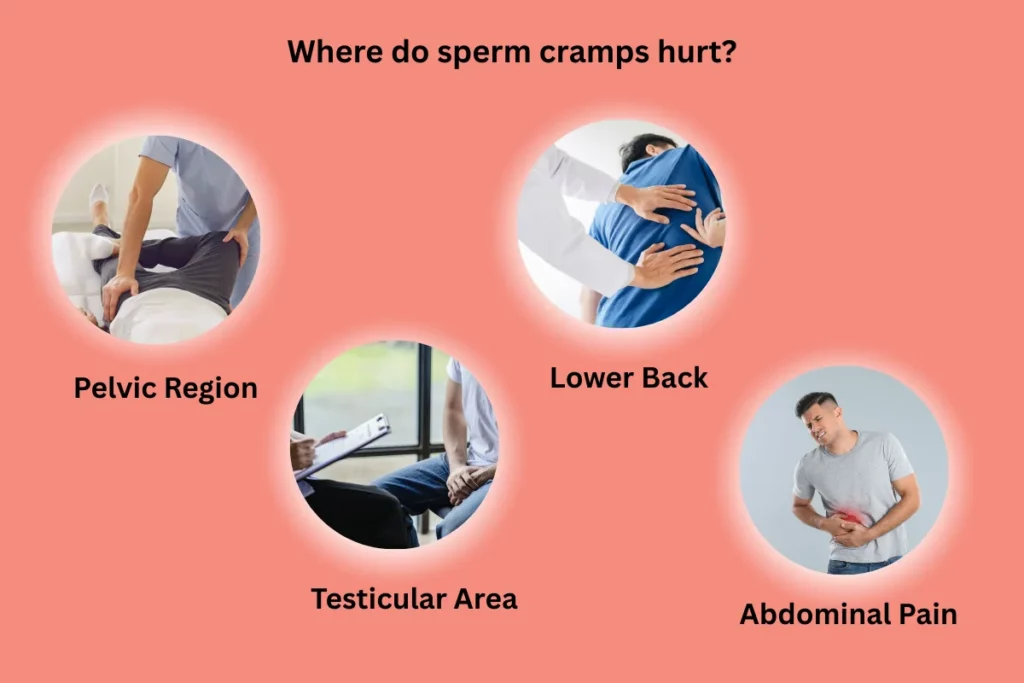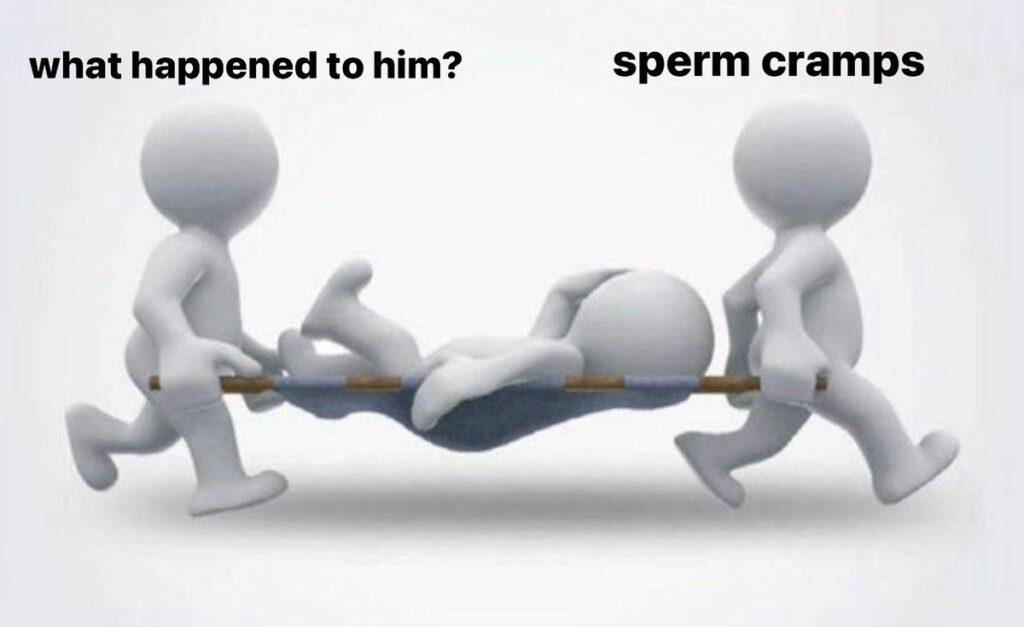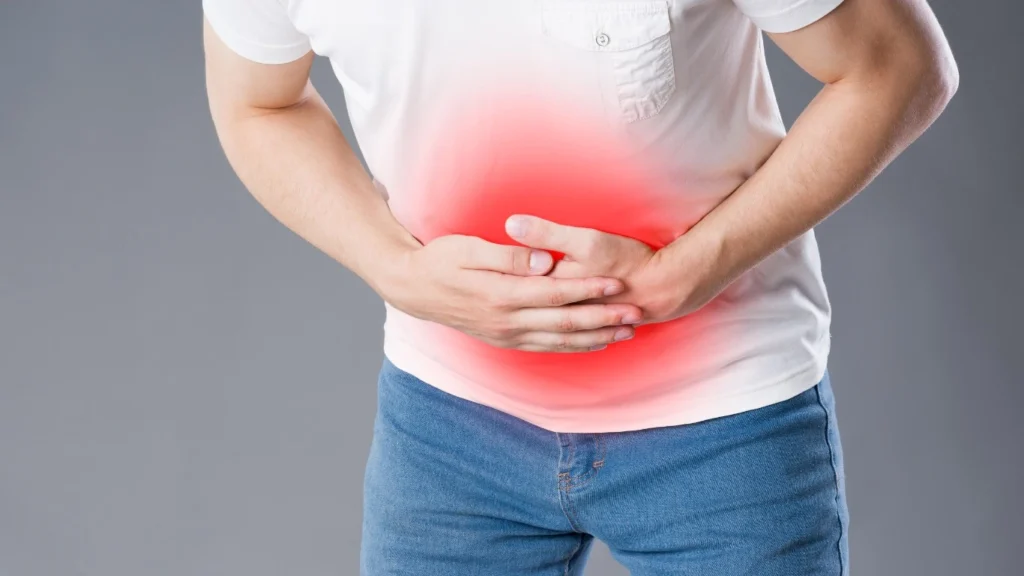What Are Sperm Cramps?
“You won’t find ‘sperm cramps’ in medical textbooks,” says Dr. Snell. “It’s more of a men’s slang term for any pain or aching sensation in any of the locations associated with sperm production or ejaculation, including the testicles, epididymis, vas deferens, prostate, and pelvic floor.”.
Some men complain of sperm cramps as a part of or subsequent to ejaculation, while others experience dull pain in the testicles or lower abdomen even when they are not sexually active. While there is no such medical condition as “sperm cramps,” its symptoms can be indicative of some real and perhaps treatable conditions.
Myth #1: Sperm Cramps Are Caused by Too Much Ejaculation
This is one of the most common myths regarding sperm cramps. While regular ejaculation can sometimes lead to temporary discomfort due to muscle spasms, it is not typically the direct reason for chronic sperm cramps. There are mechanisms in the male reproductive system to handle routine ejaculation. Without related underlying conditions such as prostatitis or dysfunction of the pelvic floor, routine ejaculation by itself is not going to be the cause of sperm cramps.
Fact: Pain during ejaculation can be related to tension in the muscles of the pelvic floor, infection, or inflammation—not the act of ejaculation.
Myth #2: Sperm Cramps Mean You Have Too Much Sperm
The myth is that Sperm Cramps occur due to the “back-up” of sperm caused by infrequent ejaculation. This proves there is a belief that men have to release sperm on a regular basis in order to avoid pain.
Fact: The unused sperm are naturally reabsorbed in the body, and it is not dangerous to not ejaculate for long periods of time. Although some men may develop congestion-type pain, popularly referred to as “blue balls,” following prolonged arousal when not ejaculating, this is a harmless transient condition and not an actual sperm cramp.

Possible Medical Explanations for Sperm Cramps
Even if “sperm cramps” is not a medical term, the pain itself could be a sign of an underlying condition. Some of the possible reasons are listed below:
1. Epididymitis
Epididymitis is inflammation of the epididymis, a behind-the-testicles tube where sperm develops and is stored. It may cause pain that some people feel as sperm cramps. Typically caused by bacterial infections or STIs, epididymitis may include symptoms like:
- Swollen or tender testicles
- Painful urination
- Fever
- Painful ejaculation
2. Prostatitis
Prostatitis is prostate inflammation and may cause pelvic and genital pain. Prostatitis may be bacterial or chronic (non-bacterial), and symptoms are likely to involve:
- Pain upon ejaculation
- Lower abdominal discomfort
- Frequent urination
- Perineal discomfort (space between anus and scrotum)
Men will describe these symptoms as “sperm cramps” because of the location and timing of the pain.
3. Varicocele
Varicocele is the dilation of veins in the scrotum, similar to varicose veins. It will probably cause a heavy or sore feeling in the testicles if one stands for a long period. Although not related to sperm movement at all, the pain may be mistaken for sperm cramps.
4. Pelvic Floor Dysfunction
The pelvic floor is associated with the muscles that are involved in ejaculation and urination. Tension or malfunction of these muscles can cause referred pain or spasms that men call Sperm Cramps Stress, poor posture, or habitual straining can result in this.

5. Seminal Vesiculitis
Swelling of the seminal vesicles—glands that partake in semen production—can cause pain during ejaculation. Though rare, the condition can also be experienced as Sperm Cramps.
Myth #3: Sperm Cramps Happen Only to Older Men
The other myth is that sperm cramps or its symptoms happen only to older men.
Fact: While age-related changes in prostate size or pelvic health may add to risk, men of any age—especially sexually active men or high-level exercise participants—may develop sperm cramps.
Young males can also experience these symptoms due to infection, sex, or even intense exercise causing strain on the groin muscles and the pelvic muscles.
When to See a Doctor
Though occasional mild pain is not harmful, recurring or severe testicular, groin, or pelvic pain should be given no consideration. You must visit a doctor if you experience:
- Persistent testicular pain
- Enlargement of the scrotum
- Pain on or after ejaculation
- Fever accompanied by genital pain
- Bleeding in the semen or urine
They may be signs of infection, inflammation, or other diseases that can be treated. Treatment delayed may cause problems like inability to have children or persistent pain.

How Are Sperm Cramp Symptoms Diagnosed?
A healthcare provider will begin with a full sex and health history, followed by physical examination. Routine tests include:
- Urinalysis and urine culture to search for infection
- Ultrasound to examine testicular or scrotal anatomy
- STD testing
- Prostate exam
- Pelvic floor exam if muscular dysfunction is also being considered
Based on findings, treatment may involve antibiotics, anti-inflammatory medications, physical therapy, or lifestyle changes.
Myth #4: There’s No Cure for Sperm Cramps
Some men believe that they simply need to tolerate this pain, especially if it’s been happening for a lot of years.
Fact: Most of the time, the cause of Sperm Cramps can be found and treated. Whether the issue starts with an infection, inflammation, or muscle pull, there are treatments that work based on evidence.
Self-Care and Prevention
If you have occasional pain that is similar to sperm cramps, do the following preventive measures:
- Practice safe sex to avoid STIs that lead to epididymitis or prostatitis
- Drink plenty of fluids to preserve urinary and prostate health
- Stretch and strengthen the pelvic floor muscles with exercises like Kegels
- Avoid long periods of sitting or use a cushion to relieve pressure from the perineum
- Reduce stress, which can tend to cause muscle tension
- Visit a urologist for routine examinations, especially if symptoms persist
Conclusion
Although “sperm cramps” is not a formally recognized medical diagnosis, the ache it describes does exist and is typically a sign of a more severe underlying issue that must be treated. Regardless of whether the etiology is infection, inflammation, or muscle issues, distinguishing truth from myths about male reproductive pain is crucial. Educating men regarding the truth about sperm cramps can empower them to seek treatment early and regain comfort and normalcy in their sex lives.
If you are experiencing symptoms, don’t keep quiet. Talk to a healthcare provider—what you call “sperm cramps” might be the way the body is trying to tell you something that can be treated.



